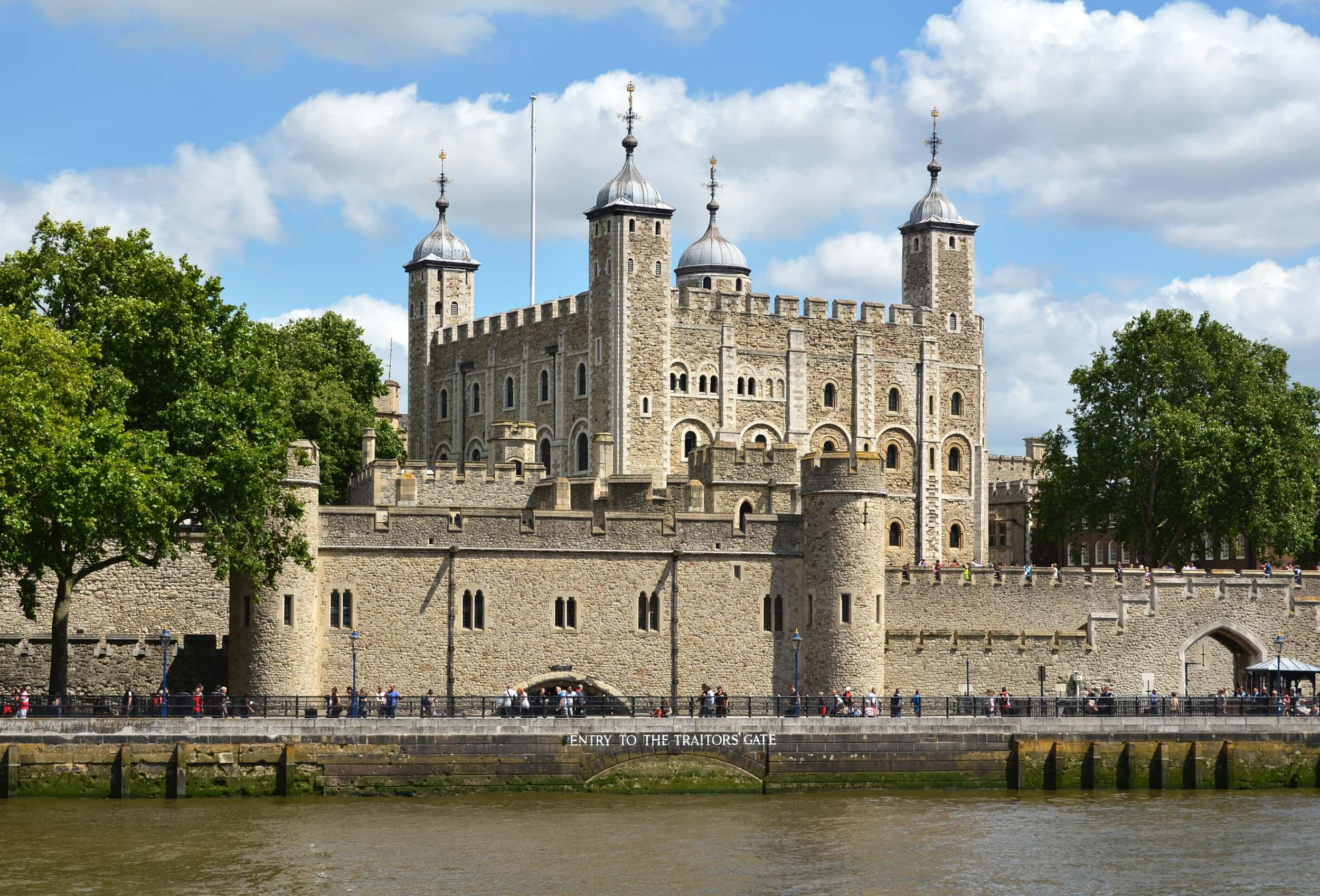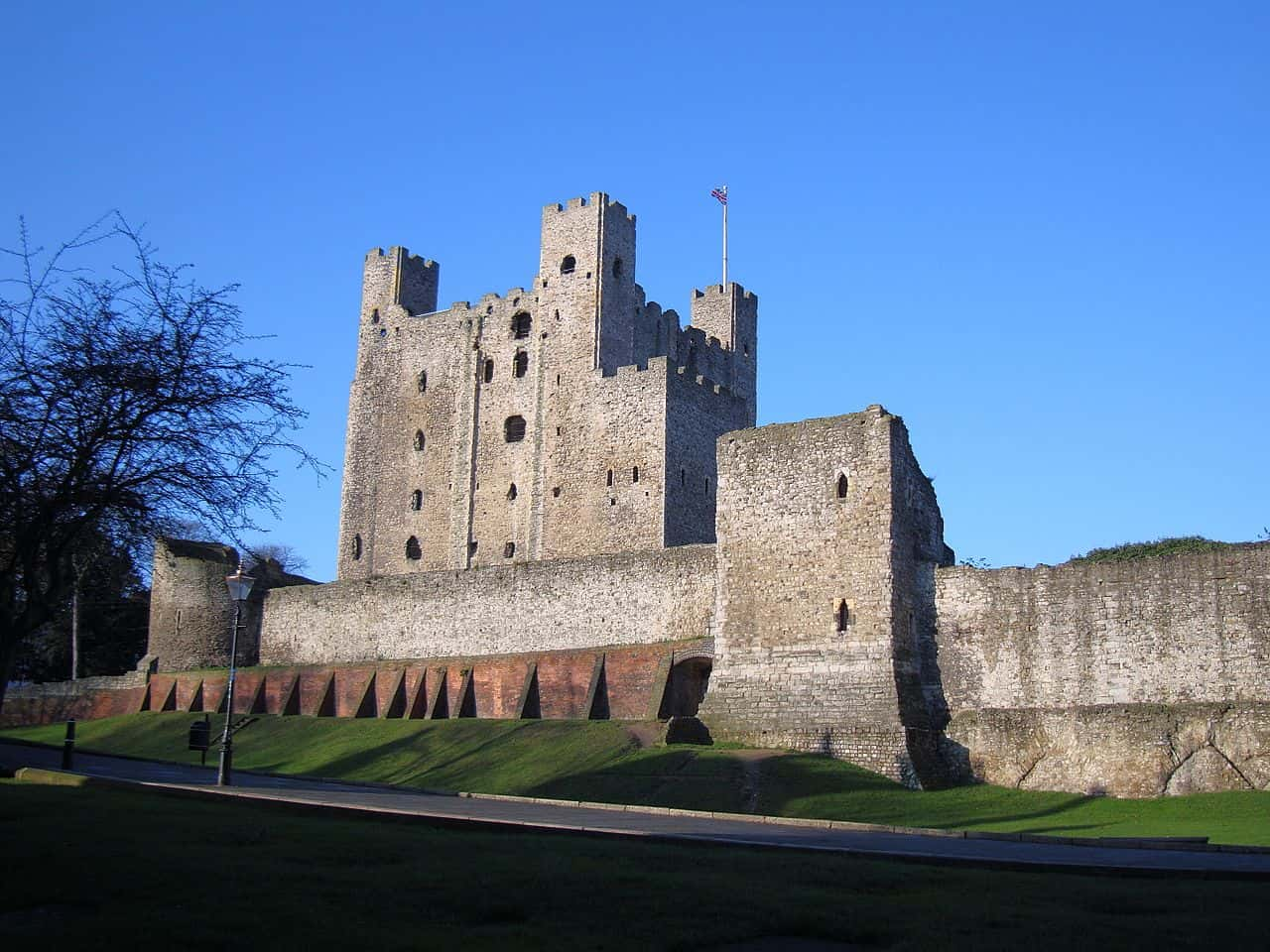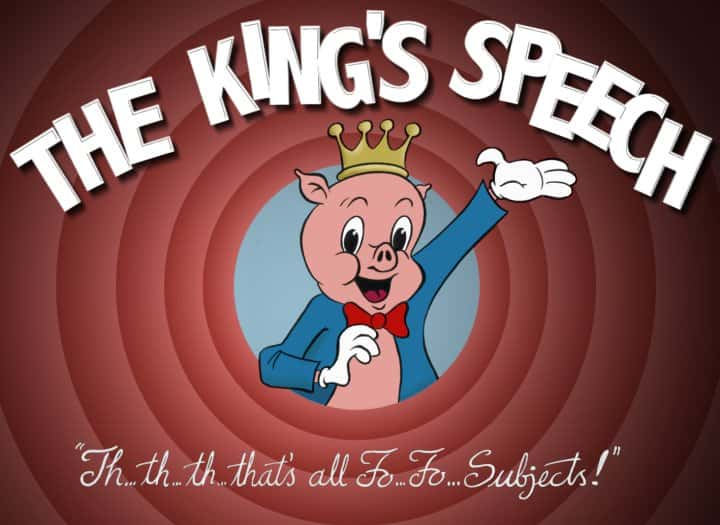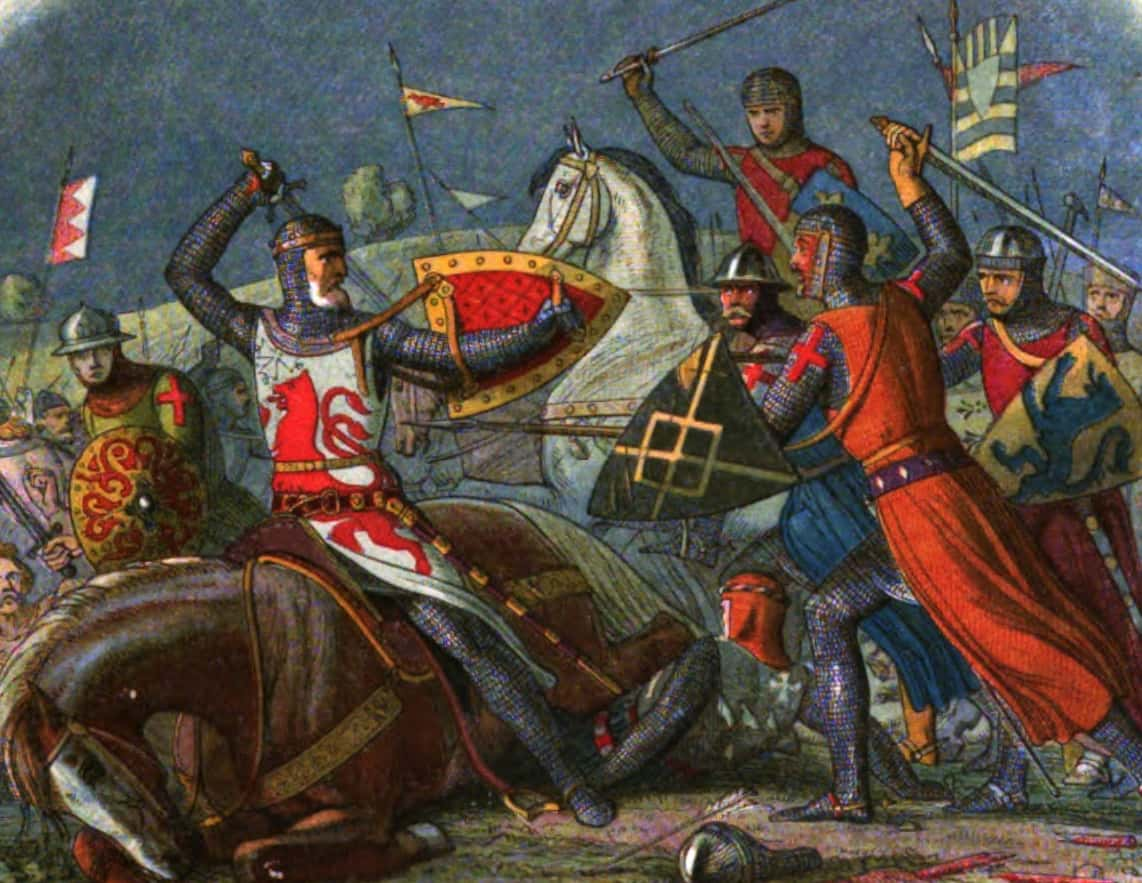There’s a reason history wants us to forget about these disastrous kings. From insanity to corruption to cruelty, discover these chilling facts about the some of the most despised rulers in England’s history.
1. From the Cradle to the Crown
Inheriting the crown at nine months old, Henry VI, the mad king, remains the youngest person to become King of England. But one crown was not enough for this baby. For a time, Henry also claimed the French throne (in name, at least). To this day, he is the only English monarch to also be crowned King of France. What did you accomplish while still in diapers?
2. I Bring You Love
Henry was responsible for one of the most bizarre holidays in English history. In the early days of the Wars of the Roses, Henry opted for “Love” over “War.” In fact, he declared 25 March 1548 to be “Loveday.” For real. The celebrations forced the combatants from both sides of the war—the Yorkists and the Lancastrians—to literally hold hands and walk in pilgrimage with each other to St. Paul’s Cathedral.
Naturally, the handholding didn’t last more than a day; all parties promptly (and I bet rather awkwardly) returned to the business of trying to overthrow their kin pretty fast. If every civil conflict could be solved with TLC, the world would be a better place…
3. Who Needs a Painkiller When You Have a Hat?
A hat belonging to Henry was kept as a sacred artifact up until the English Reformation. It was said to cure migraines. Good hat!
4. Return Policy
Henry’s reign marked the humiliating loss of England’s territories in France. Most notably, England lost the Duchy of Aquitaine in 1451—a legendary holding that had been in England since the days of Henry II. With the final loss of Bordeaux (after a brief retaking) in 1453, the puny city of Calais was England’s only holding in France.
 The Hollow Crown, Neal Street Productions
The Hollow Crown, Neal Street Productions
5. Entering Sleep Mode
Upon learning about the loss of Bordeaux, England’s last important holding in France, Henry VI had one of many complete mental breakdowns. He remained unresponsive—basically catatonic—for more than a year.
6. A Baby Is Not an Alarm Clock
During his year-long mental breakdown in late 1453, Henry welcomed his only child, Edward of Westminster. Unfortunately, not even the birth of an heir could snap the king out of his zombie-like state.
 Wikimedia Commons, John Cassell
Wikimedia Commons, John Cassell
7. An Illness of One’s Own
Modern historians have speculated that there was a chilling cause for Henry's constant breakdowns: schizophrenia. Certainly, he had the genetic disposition for it; his mother’s father, Charles VI of France, spent the last thirty years of his life with periodic bouts of instability and hallucinations.
8. What Did I Miss?
By Christmas 1452, Henry finally came out of his mental breakdown. Unfortunately, he woke to the worst possible news: his relatives had enough of the bad governance and humiliating loss of French territory. Nobles began to back the Duke of York’s claim to the throne, taking the government and then setting sights on the crown itself.
Thus began the “Cousins War,” or what is better known as the Wars of the Roses.
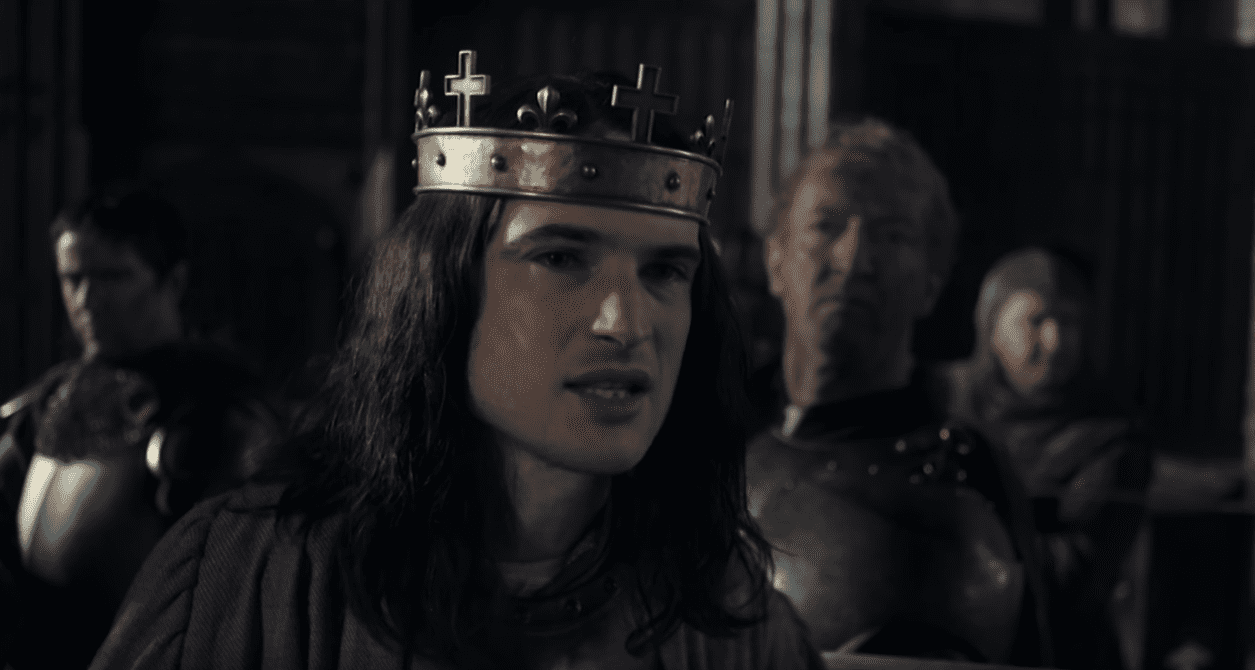 The Hollow Crown, Neal Street Productions
The Hollow Crown, Neal Street Productions
9. I Wanna Hold Your Hand
When Henry VI retook the throne in 1470, it’s said he had to be led by the hand through London like a child. At this point, he was still far too unstable to rule on his own.

History's most fascinating stories and darkest secrets, delivered to your inbox daily.
10. Daddy Issues
Ironically, the gentle Henry VI’s father is one of the most famous warrior kings in history. This daddy, Henry V, immortalized himself in the One Hundred Years’ War against France (Shakespeare’s plays also helped). Unfortunately, the battling took its toll: while on campaign, the 36-year-old Henry V died of dysentery and left behind just one infant child, our Henry VI, to take his place.
 Wikimedia Commons, -AHCd_53Kwff3Q
Wikimedia Commons, -AHCd_53Kwff3Q
11. A Second Chance at Family
After his father’s death, Henry’s mother famously embarked on an affair with her Welsh household servant, Owen Tudor (that name sound familiar?). Although “official” record of their marriage is very tenuous, the young King Henry proved generous towards the resulting half-brothers, Edmund and Jasper Tudor. He later granted earldoms to both of them, effectively helping them found the House of Tudor.
12. If You Want To Be Our King, You Can’t Get With Your Friends
Henry’s chosen allies made him very unpopular with the people. One of the nobles in his clique, the Duke of Suffolk, was so hated that Londoners called regularly for his blood. Instead, the king met the people halfway and settled for Suffolk’s exile. Unfortunately, the duke’s ship was intercepted, and his body was found murdered on the shores of Dover.
This goes to show how little the king’s will was respected by 1450.
13. Maybe We Just Like to Blame Women?
Henry once fell into a year-long catatonic state, and some people thought that it the result of shock after learning his wife was pregnant. This has clearly been debunked because Margaret was about seven months pregnant at the time he fell. Even before the advent of ultrasound, Henry would have gotten a heads up.
Others used this tale to leverage rumors that either (1) Henry had fallen ill from the shame of breaking his vows of chastity (with his own wife) or (2) Henry’s wife had strayed, and he had fallen ill from being a cuckold. The latter story worked well for the House of York…
14. My Heroine
Henry’s knight in shining armor was his own wife, Margaret of Anjou. On 10 July 1460, the king got himself captured the Battle of Northampton by the Duke of York. Luckily, it only took his loving queen’s forces eight months to rescue him.
15. Sometimes You Have No Choice But to Laugh
After his wife rescued him from captivity, Henry had entered another bout of mental instability. Given to singing and laughing, Henry kept this up as fighting continued in the background.
16. I’ll Be Back
Not many kings lose their crown twice, but Henry VI was never ordinary. His first brush with bare hair was at the Battle of Towton. In March 1461, the Duke of York’s son, now Edward IV, defeated the Lancastrian King and took the throne.
17. A Prince Pause
Henry spent the first part of Edward’s reign hiding with allies in Northern England and Scotland. His wife, Queen Margaret, remained the brains of the operation and continued to lead the Lancastrian resistance.
18. Poems and Prison Bars
In 1465, the king formerly known as Henry VI was recaptured by Edward IV’s forces. As a prisoner in the Tower of London, Henry passed his time by composing (bad) poetry.
19. Accept Substitutions
As with many things, Henry's wife Margaret engineered the retaking of Henry’s throne. She hammered the deal with the Earl of Warwick and Edward IV’s brother, the Duke of Clarence. Should Henry and Margaret’s only son, Edward of Westminster, die without heirs, Clarence would be next in line for the throne. The deal was sealed by wedding Westminster to Warwick’s daughter, Anne Neville.
20. Easy Come, Easy Go
Henry retook the throne...but he only held onto it for six months. It’s largely accepted that Warwick and Clarence were running the show anyway. Unfortunately, this means Warwick had the power he needed to wage war with Burgundy. Following the whole “the enemy of mine enemy is my friend” thing, Burgundy promptly sided with Edward IV in 1471 and helped the Yorkist king retake the throne.
21. The Prodigal Son Doesn’t Return
Henry’s son, Edward of Westminster, is the only English heir apparent in history to die in battle. At the age of 17, he predeceased both his parents on 4 May 1471 in the Battle of Tewkesbury. This deciding battle threw our Henry VI off the throne for good.
22. Better Him Than Someone Good
Upon King Edward’s return, Henry VI was imprisoned for a second time in the Tower of London. However, he was kept alive—Edward had bigger plans in mind for him. It's generally believed that the Yorkists did not want to leave their enemies with a more formidable leader—after all, Henry was prone to year-long catatonic states. Not exactly a big threat.
23. The Lap of Luxury and Love
Despite their many political difficulties, Henry and his wife Queen Margaret had a tender relationship. The couple once kicked off New Year celebrations by receiving their gifts in bed, where they lay in their PJs and pillows all morning and thereby beat John Lennon and Yoko Ono’s celebrity staycation honeymoon by some centuries.
 The Hollow Crown, Neal Street Productions
The Hollow Crown, Neal Street Productions
24. Never Nude
Henry never took a mistress. Maybe Henry loved no one but Margaret, but others have suggested another, less romantic reason. It was widely rumored that the feeble Henry had a crippling phobia of naked bodies. According to one chronicler, King Henry literally ran away in distress after a lord brought a gang of topless ladies to a Christmas celebration as a ribald joke.
The king also couldn’t stand the sight of naked men in the medieval-typical setting of a bathhouse. To Henry’s credit, naked strangers are scary.
25. It’s Me!
In his more lucid years, a young Henry greeted his bride by disguising himself as a squire and “unmasking” his royal identity to her later in a show of courtly love and pageantry.
26. Beat By a Broken Heart (and Skull)
Henry VI of England’s “official” death took place on May 21, 1471 by the cause of “melancholy.” Reportedly, he learned of his son’s death and fell into a devasting and irreparable grief. However, rumors suggested a much darker fate. Many believed that the two-time king was murdered on Edward IV’s orders. He was 49 years old.
27. Kingly Heights
According to his skeleton, Henry stood at five feet and nine inches. That’s fairly tall for a medieval man.
28. Bet The House on This House
According to one chronicle, Henry VI predicted that his nephew, Henry Tudor, would inherit the throne when the latter was just a young boy. Presented with the child at court, Henry VI apparently looked at him for a long time and then told all the courtiers, “This truly, this is he unto whom both we and our adversaries must yield and give over the dominion.”
Maybe he was being nice to the little kid, but what a lucky guess.
29. Sticks and Stones May Break My Bones, But So Can Cousins
Centuries after his death, Henry’s corpse was dug up. His light hair was covered in blood and he had damage to his skull. This strongly suggests his death was perhaps less “melancholic” and more “murder-y.”
30. The Runt
The man who would become King John was born on Christmas Eve, 1166, in Beaumont Palace. He was the youngest of five sons born to King Henry II of England and Queen Eleanor of Aquitaine.
31. A Man for Church
When John was very young, he was put into the care of a wet nurse and sent to live at Fontevraud Abbey. The leading theory as to why this was done is that John, being the fifth son, stood to inherit nothing in terms of land, so life in the church was a good alternative. If that was his parents’ plan, though, it didn’t quite work out.
32. Long-Lasting Dynasty
John’s father, Henry II, was the first man of the House of Plantagenet to rule England—John himself would be the third man to do so. The Plantagenet family would go on to rule England for three hundred years, until the violent death of Richard III in 1485 at the Battle of Bosworth Field.
33. Short Stature
According to the sources, John had very dark red hair and a “powerful, barrel-chested body.” However, this powerful body only stood 5’5” tall.
34. Stop Calling Me That!
As we mentioned already, John wasn’t set to inherit much since he had four older brothers. As a result, his father, Henry II, gave him the humorous nickname “John Lackland.” That moniker remained with John for the rest of his life.
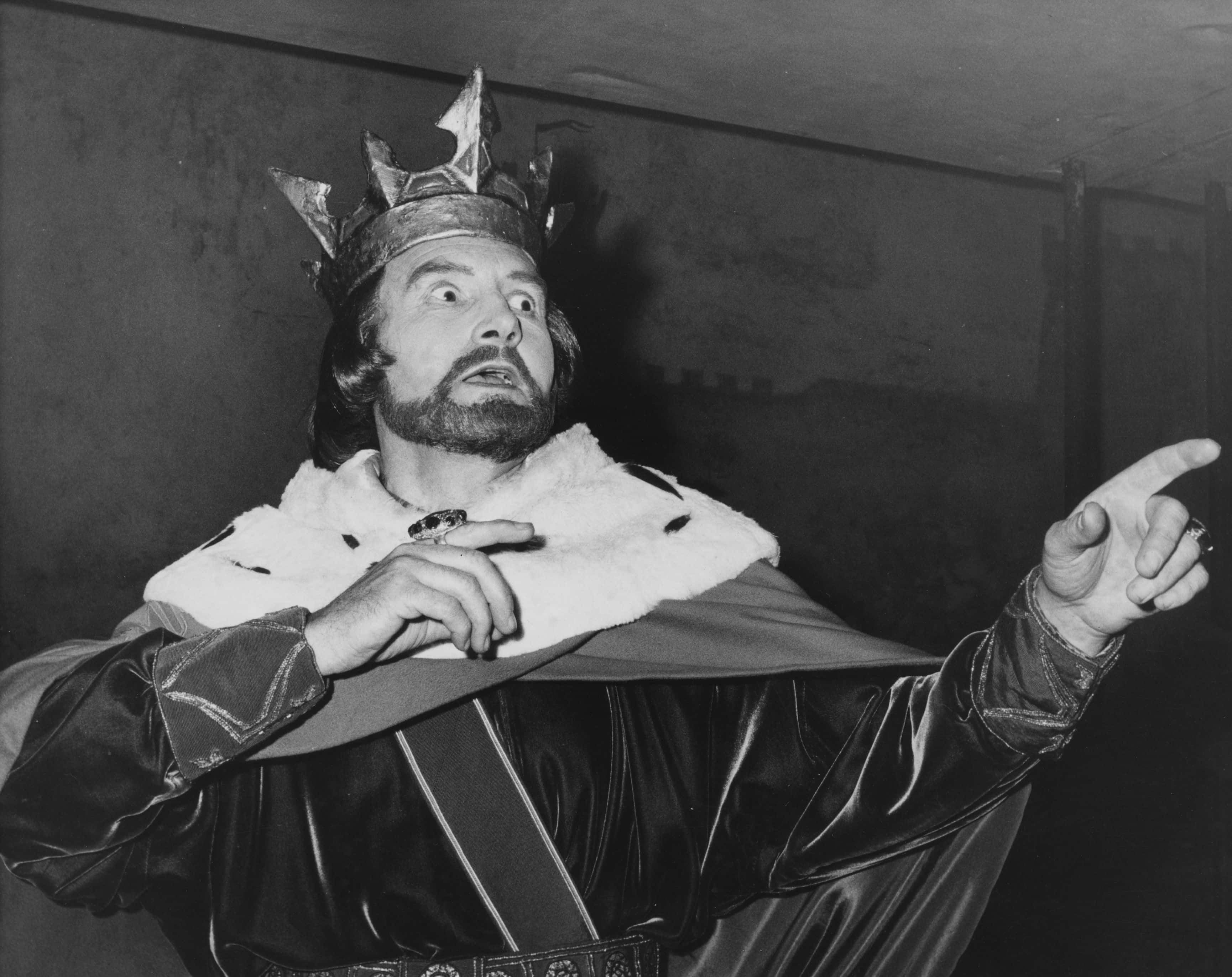
35. Ingrates!
Henry II, John’s father, wasn’t a very popular man. In fact, John’s own mother encouraged his older brothers to rebel against their father in 1173! Although they also allied themselves with the King of France, Henry still defeated this revolt in 1174. Meanwhile, John had remained loyal to his father and was given land, often taken from nobles who’d previously held them.
36. John the Sportsman
John was known to have been an enthusiastic hunter. Even in the Middle Ages, when there were fewer hobbies to choose from, John was devoted to blood sports. In fact, the only activity which captivated his interest more was gambling. Bizarrely, the game he liked to gamble most on was backgammon. What can we say, it was a different time.
37. Doesn’t the Squabble Ever Cease??
In 1183, another round of fighting came up in the dysfunctional Plantagenet family. Henry II’s oldest living son and heir, also named Henry, went to war with Richard, his younger brother. When Henry died of dysentery during the conflict, their father named Richard his new heir, while John would take Richard’s title of Duke of Aquitaine.
In an incredible example of wanting to have his cake and eat it too, Richard refused to give up Aquitaine. Henry II sent his sons John and Geoffrey to bring their older brother to heel.
38. Would You Call That Nepotism?
Long before his father died, Richard the Lionheart had expressed the desire to go east on a crusade to the Holy Land. Taking a lesson from his father, Richard tried to buy the aristocracy’s loyalty before he left. As a result, John became the Count of Mortain and received land in Devon, Dorset, Somerset, and Nottingham. Hey, you'd be crazy not to take it if it was offered!
39. Old Foes, New Friends
One rare highlight of John’s military career was when he discovered that the Scottish were planning an alliance with France against England. In 1209, John acted first by invading Scotland. Scotland's King William was forced to sign the Treaty of Norham, which had him yield his daughters as hostages to John and pay 10,000 pounds to boot.
This proved too costly of a price; William’s enemies were emboldened enough to try and overthrow him. In a case of near comedic irony, John had to reinvade Scotland in 1212 to defend William’s throne!
40. Dude… This is Creepy
It’s unknown just how old Isabella of Angouleme was when she became John’s second wife, but the historical records of the time all maintain that she was absurdly young to get hitched—and this was the Middle Ages, mind you. Estimates put her age “at most 15 and more probably towards nine years old at the time of her marriage.” Keep in mind that the 34-year-old king had put aside his first marriage just to marry her instead.
We never thought we’d find a King of England who could make Henry VIII’s track record look better by comparison!
41. Keep the Peace!
Predictably, a power struggle emerged in England while Richard I was on his crusade. John had promised his brother that he'd stay out of England for three years. Of course, when public opinion turned against the regents in charge of England, John and Richard’s mother persuaded Richard to let John go in and try to keep the peace.
42. Setting the Precedent
Instead of keeping the peace, John made his own bid for the throne. He took advantage of Richard’s long absence by declaring that Richard wasn’t coming back. This claim would later become a central plot point in every version of Robin Hood you’ve ever heard—more on that later.
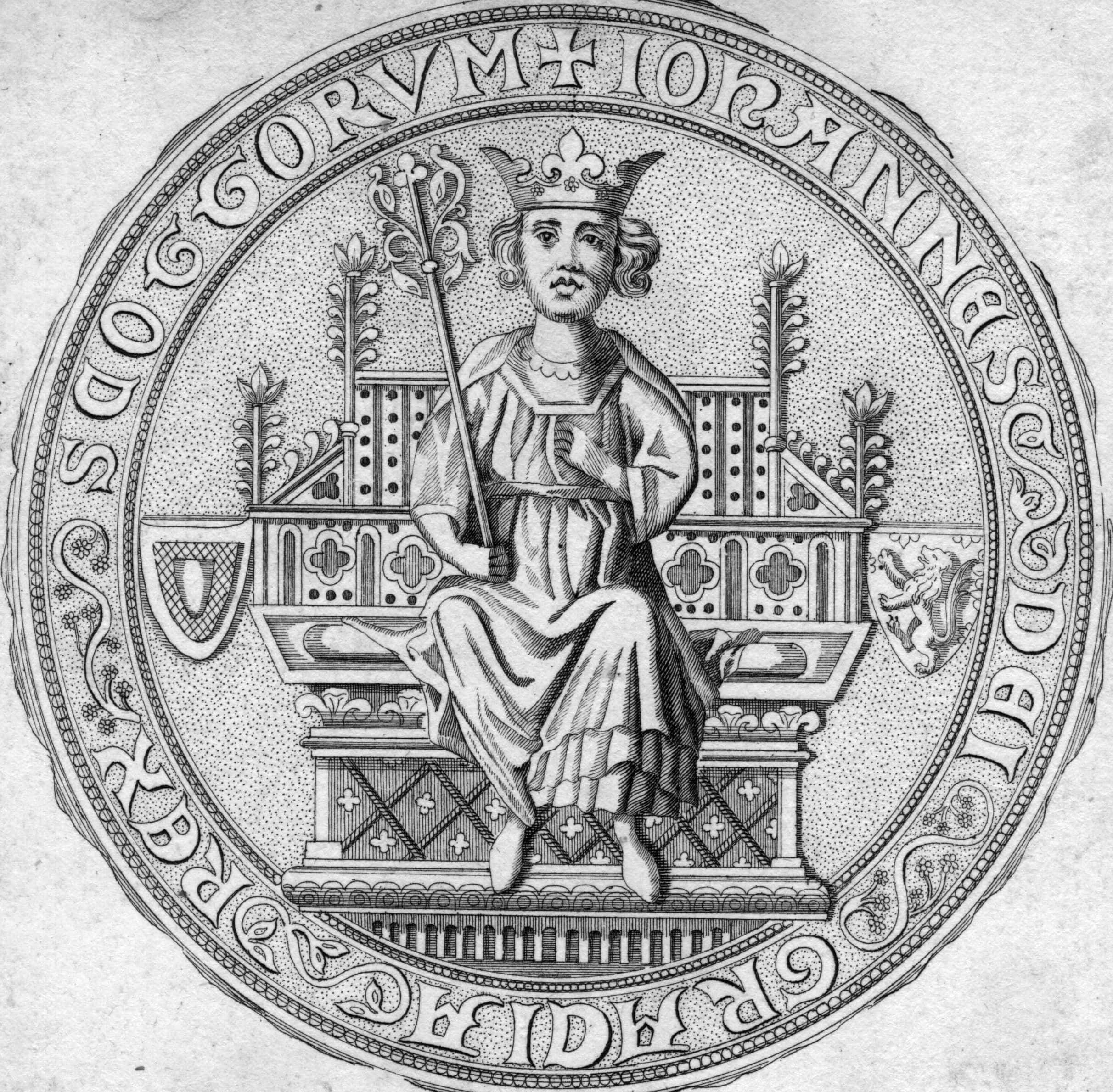 Getty Images
Getty Images
43. Awkward Negotiations
To double down on this deceit for the throne, John traveled to France and made a deal with King Philip to marry his sister, Alys, in exchange for an alliance. Keep in mind that John would have had to put aside his then-wife, Isabella of Gloucester. Imagine that conversation!
44. Why Bless Your Heart, Little Brother
John’s brother, King Richard I, did eventually return to England in 1194, just as fighting had broken out between John’s followers and those loyal to Richard. John fled England, but his brother followed him to Normandy. Amazingly, Richard forgave John, stating that he was just “a child who has had evil counselors.” Keep in mind that John was 27 at the time, so maybe Richard was being a bit passive-aggressive.
45. Bad Prince John
John’s most lasting legacy is arguably his role as the primary antagonist in the legends of Robin Hood. First appearing in the 14th century, these stories of the famous outlaw usually take place during the reign of King Richard when he was absent from England, and John ruled as regent. As a result, he has frequently been portrayed in media as a villainous character, be it comedic, sinister, or as an animated lion.
46. King Hoarder
John was known to collect things that interested or fascinated him. Rare for his time, John was an avid reader and made sure to bring a large number of books with him wherever he went. John also loved gems; he would amass a collection of precious stones to the point where he was known as a “connoisseur of jewels.”
47. The Clouds Burst
When King Richard I died in 1199, there were two legitimate claimants to England’s throne: his nephew, Arthur of Brittany, and his brother John. There was legal precedence for either one succeeding Richard, and they both had supporters. This led to many years of conflict beginning in Normandy shortly after Richard’s death.

48. Premature Promotion
In 1177, John's father made him Lord of Ireland. Some theories state that he was rewarding the one son who hadn’t rebelled against him by that point. Oh, and we should mention: John was 10 years old at the time.
49. What a Woman!
Despite the deal with the French to marry the king’s sister, that wasn’t who John married as his second wife. Instead, he married another Isabella! This new wife was Isabella of Angouleme. It remains unknown why John went through all that trouble to marry again, though some historians would later maintain it was Angouleme’s beauty. She was even compared to Helen of Troy!
50. Touring Monarch
While his father Henry II and brother Richard I had spent almost no time at all in England, John was far more involved as a king—though this was partly due to the fact that England was all he had after his failed campaigns. John would travel around England with a court that dealt with local and national issues wherever they went.
John even made sure to visit regions of England that had been neglected and ignored by the kings of the past.
51. Now it’s on!
John’s wars with France during his reign led to a serious alienation between himself and many of his barons, especially in the North of England. The failure of John’s campaigns was the last straw. In 1215, the barons organized a rebellion and seized several regions, including London.
52. So it Begins
John and the barons were eventually brought together at the negotiating table in 1215 after several months of conflict. A Great Charter was created as a result of their meeting, which limited royal power for good. Known as the Magna Carta, it “promised the protection of church rights, protection from illegal imprisonment, access to swift justice, new taxation only with baronial consent and limitations on scutage and other feudal payments.”
53. Downfall
John died on the evening of October 18, 1216. To this day, it’s not completely certain how John died. He suffered from dysentery in the last part of his life, which many say proved was what ultimately killed him. However, histories of the time put the blame on poisoned fruit—the most common claim was that he died from “a surfeit of peaches.” That’s one way to go!
54. Will You Accept a Cheque With That Apology?
Rare for the time, King John was noted as behaving very apathetic towards religion. He would neglect taking communion, publicly joke about church doctrine, and make blasphemous comments. To be fair, he was also recorded as making up for his big mouth by making charitable donations. This tradition is practiced by politicians and celebrities to this day!

55. So… You Lost Normandy?
One of the reasons John struggled to keep allies in times of conflict was that under his watch, prisoners were treated particularly horribly. And this was the Middle Ages, so if other lords thought he was being too cruel, you just know it was bad.
56. The Sins of the Sons
For most of his life, John remained loyal to his father when all his brothers rebelled for one reason or another—but a heartbreaking betrayal would eventually prove too much for the ailing Henry II. In the later 1180s, when Richard and the King of France warred with Henry, John sided with Richard for once. When the old and feeble king found out, it's said that this last betrayal gave Henry such a shock that he physically collapsed. He remained feverish and barely lucid, dying soon after.
57. A Man of Extremes
John was an extremely mercurial man. While he was able to be “witty, generous, and hospitable” at times, he was also said to become so angry that he would “[bite] and [gnaw] his fingers.” Doesn't sound like he was that fun to be around.
58. Not Cool, Bro
According to historical records of the time, John was known to have several mistresses. While this wasn’t uncommon among kings—shocker, we know—John took it a step too far by choosing noblewomen who were already married for his extramarital romps. This kind of behavior made John many enemies who later made exaggerated accusations in order to justify their actions against him.
59. Time of Death
Charles I of England, the doomed king, was executed for high treason at the end of the English Civil War. The execution took place outside of the Whitehall Banqueting House in London, on January 39, 1649. He was 48 years old.
60. The Black Hour
Opposite the Banqueting Hall where Charles I was executed, the Horse Guards Parade archway has a rather interesting tribute to the dead king, at least according to legend. Visitors to said archway will notice a large clock that contains a black mark on the clock’s face at 2 pm. This is said to be a commemoration of the exact time in the day when Charles I was killed.

61. No Bragging Rights, Please!
Charles’ executioner wore a mask to hide his identity. As you can assume, nobody wanted to take the credit (or the blame) for executing a King, given the whole "divine right" thing. Still, based on the cut of the axe on Charles’ neck, people determined that the executioner was clearly an experienced professional (this was back when cutting off heads could be considered a professional career).
Moreover, it was a custom in those days for the executioner to hold up the severed head and declare “Behold the head of a traitor!” In another act of anonymity, the executioner held up Charles’ head, but said nothing in an attempt to hide his voice (or her voice? You never know!).
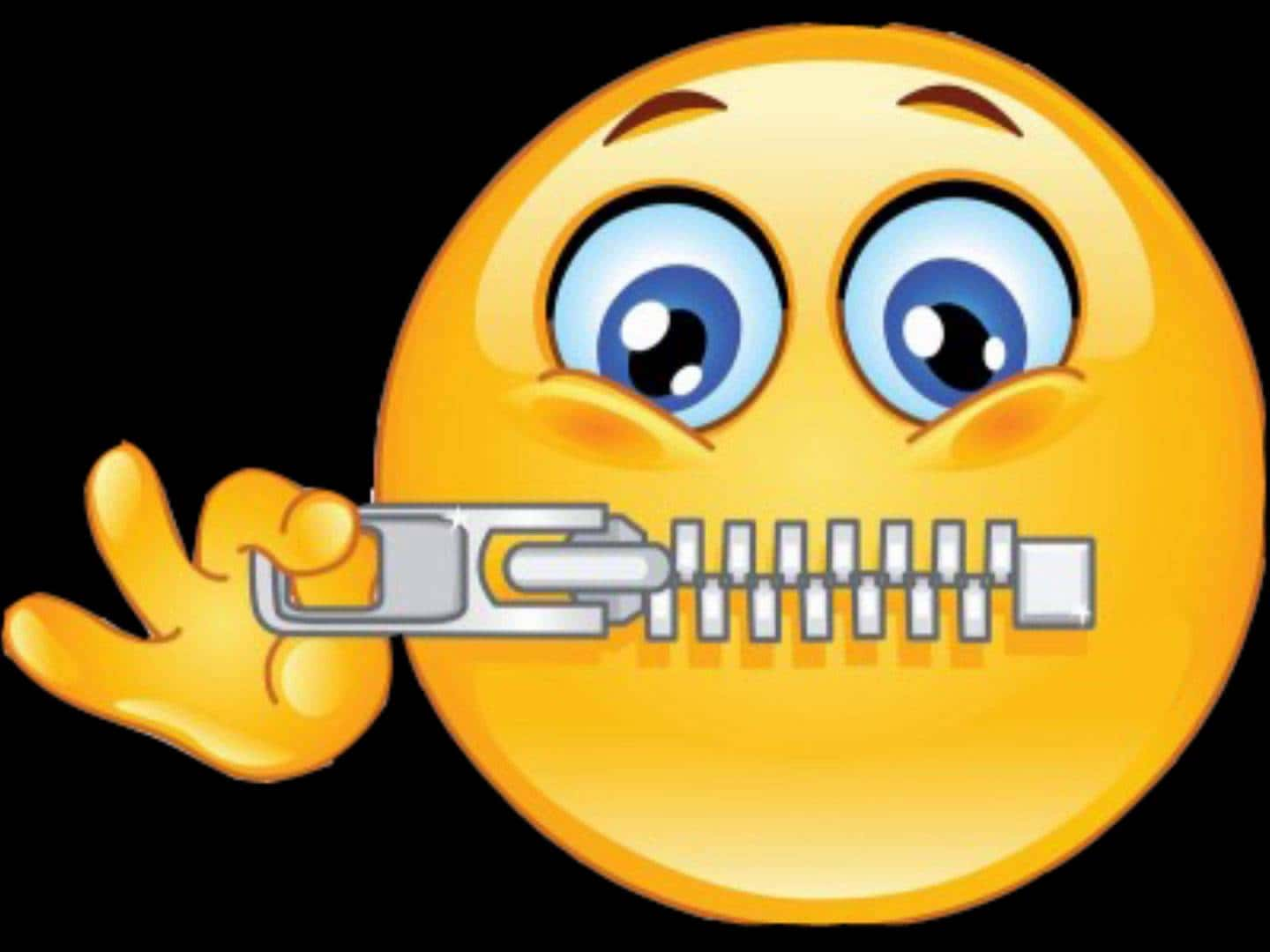 youtube
youtube
62. You D-D-Don’t Say!
As a child, Charles was frequently ill. One side effect was that he had a speech impediment due to developmental issues. Even when he recovered from said issues, Charles had a stammer for the rest of his life.
63. How About a Painting of London Bridge?!
Like many rich people, Charles I was a patron of the arts. Not only did he purchase paintings by such esteemed artists as Raphael and Titian, he actually brought other legends like Van Dyck and Rubens to England and invited them to paint there.
 pinterest
pinterest
64. Left Behind
When Charles’s father, James VI of Scotland, became James I of England, he went south from Scotland with all his family. However, Charles was deemed too sick to make the journey with his parents and siblings. They left him behind with Lord Fyvie, a friend of his father who served as a guardian to the boy.
65. Will He Walk 500 Miles? What About 500 More?
Charles eventually became fit enough for the journey to England when he was a toddler of three and a half. This was determined after he could walk from one end of Dunfermline Palace’s great hall to the other without needing any help. We just hope that the little tyke didn’t have to then walk all the way to England!

66. Was He Also a Lion-Shooting Dentist?
Despite his childhood illnesses, Charles I overcame adversity and eventually became proficient at fencing, shooting, and horseback riding. All he’d need to add is polo and croquet and he’d have scored Rich White Person Bingo!
67. Call That a Promotion?
Charles I only become king because of a heartbreaking tragedy. He was actually the second son of King James I, but his older brother Henry died of sickness in 1612 at the age of 18. Charles thus became heir to his father instead.
68. I Call That a Bargain!
In the final chapter of the English Civil War, Charles was actually a captive of Scottish forces. After nine months, the Scots got an offer of 100,000 pounds if they turned Charles over to English captivity and returned home. Amazingly, the Scots agreed, handed Charles over, and returned to Scotland, presumably thinking that they’d gotten a great deal out of the war!
69. No Hard Feelings
Despite the earlier treachery for money, though, Charles I turned once again to Scottish support while he was in captivity. In December 1647, Charles forged a secret treaty where he would permit the Presbyterian faith in Scotland if they would invade England and put him back on the throne. Those Scots certainly drove an easy bargain for once!
70. Almost an Even Dozen
From 1629 until 1640, Charles I actually ruled England without a parliament. He had become so fed up with that parallel power that he found a loophole that said he could rule England alone as long as he could keep the nation at peace. So while he did cease war with France and Spain, this period of time without parliament has been called the Eleven Years Tyranny.
71. There’s Blood on Those Paintings!
By the time of Charles I’s execution, he had acquired 1,760 paintings in one of the largest private art collections of the period. The English parliament sold off the majority of these paintings in what must have been either the most prestigious yard sale ever or the most awkward auction ever held.
72. Some Things Never Changes (and Others Do)
Despite the 1647 deal with the Scots, Charles bet on the wrong horse again—and he would pay the price for it. The Second English Civil War was much shorter than the first one. Parliamentary forces defeated the royalists for good in August 1648. That same year, the English parliament purged itself of any members who were opposed to a trial of Charles I, forming what was known as the Rump Parliament.
73. Love Conquers All
While Charles I was a Protestant by faith, he ended up marrying a Roman Catholic. Keep in mind that this was a time when England and Spain had spent half a century embroiled in conflict, and the rulers of England had alternated between Protestant and Catholic, with each side persecuting the other. In contrast to all that turmoil, however, Charles and Princess Henrietta Marie of France had a mostly happy marriage.
74. Those Darn Scots…
The Eleven Years Tyranny, with English parliament remaining dissolved thanks to Charles’ loophole, ironically came to an end thanks to Scottish bishops giving Charles a headache. Charles had stirred up the Church of Scotland by pushing The Book of Common Prayer on them in an act of reformation. In response, the Scottish Bishops’ Wars began, which eventually forced Charles to call for parliament to be formed in 1640.
75. We WILL Have a Voice!
Once parliament had finally been called by Charles again in 1640, he was greatly frustrated when they closed the loophole which he’d used to shut them out for eleven years (maybe they got sick of vacation pay?). They passed acts that declared that parliament couldn’t be dissolved without their consent and England couldn’t go more than three years with a dissolved parliament.
Well Charles, it was nice when it lasted.
76. Childhood Titles
Before Charles was heir to his father’s title and throne, he was given the traditional title of Duke of York (traditional in the sense that all second sons in the royal family get that title). Charles was also appointed Knight of Bath and a Knight of the Garter. All before he was 12 years old, mind you!
77. Money, Money, Money!
Charles I's insatiable greed was eventually his downfall. He spent the Eleven Years Tyranny making enemies thanks to his desire for money through new taxes. When England was at war, the coastal residents had traditionally been given a tax known as Ship Money. Charles, meanwhile, imposed the Ship Money tax during peacetime, which frustrated more than a few people.
78. You’re Cut Off, Charlie!
Despite that outcry, however, Charles’ Ship Money made him a lot of, well, money. This came to an end when parliament was called again in 1640 and they had Charles abolish all the new taxes he’d installed during the Eleven Years Tyranny. As you can imagine, he wasn’t too happy with parliament over that!
79. I Don’t Have to Listen to This, I’m a God!!!
Charles, like his father, believed that kings had a divine right to rule. This put him above the law and above the need to explain himself. Of course, this was a belief that didn’t do him any favors during his trial (more on that later).
80. Now it’s the Irish?!!
The final straw between Charles I and the English parliament came during the Irish Uprising of 1641. The king and parliament each had their own ideas on how the army should be used to restore peace in Ireland, and who should be given command of said forces. Eventually, Charles had enough of the many critics he had in parliament and he moved to arrest five of the worst of them.
However, those five members of parliament got word of Charles’ plans and fled before they could be apprehended.
81. It’s on Now!
Charles I arrived to arrest his five leading opponents in the English parliament, but they were nowhere to be found. He demanded to know their whereabouts when he discovered that they’d escaped. In a famous act of defiance, the Speaker refused to tell Charles where he could find those five missing rascals. In early 1642, Charles left London to raise an army against parliament.
The English Civil War had begun—and history would shake from its consequences.
 Stanford Graduate School of Business
Stanford Graduate School of Business
82. Oops…
When Charles’s army was being pushed back by parliamentary forces at the 1645 Battle of Naseby, the king tried to turn the tide back to his side by leading his forces from the front—but his plan would backfire horribly. As he rode forward, one of his officials, Lord Carnwath, stopped him out of fear that the king would be killed or captured because of his inflated sense of heroism.
Despite Carnwath’s intentions, the sight of the king being pulled away from the fight was taken as a sign by the rest of the army to retreat. The parliamentary forces were able to make a victory out of this unintended help from Carnwath!
83. You, Commoner! Switch Clothes with Me!
The English Civil War led to some very near misses for Charles I as he led his armies against the parliamentary forces. The 1646 siege of Oxford was especially embarrassing for Charles; he was forced to flee the city while dressed up in servants’ clothes!
84. Old Habits Die Hard
When setting up a treason trial against the captured Charles I, the English parliament found a lot of opposition. Three Chief Justices all declared that the action was unlawful, and the High Court’s 135 commissioners were reduced down to 68 when the others either avoided the trial or straight up refused to take any part.
85. Stick to Your Principles!
In an act of supreme awkwardness, Charles went through his 1626 coronation as King of England without his wife beside him. Henrietta Marie refused to take part in a non-Catholic ritual, even if it was in the service of making her Queen of England! Talk about stubborn!
86. Odds Are Against You, Sire
The charge of treason against Charles rested on his use of power towards fulfilling his own selfish interests instead of actually improving the lives of his people. The horrible cost of the English Civil War didn't help things either—around 6% of England’s entire population had died during the conflict.
87. Quite a Defense, Majesty…
When it came time to defend himself from the accusations at his trial, Charles I outright refused to participate in a court he didn’t recognize. He considered the proceedings to have no authority or right to try him. Eventually, he would be removed from the court while witnesses testified against his character directly to those part of the trial.

88. My Number One Guy!
One of Charles’ favored subjected was the Duke of Buckingham, who had been involved in the negotiations with Spain, and then later a failed military expedition by a then-king Charles. Buckingham was assassinated on the 23rd of August 1628. In a moment that foreshadowed the extreme divide between king and country, Charles was devastated at Buckingham’s death, mourning for days.
Meanwhile, the general population was rejoicing at the news of Buckingham’s death (people were a lot stricter about military failures back then).
89. Bloody History
Even after Charles I was executed, and two civil wars had been fought, the English still had the stomach to fight another one! The third English Civil War resulted in the military triumph of Oliver Cromwell, who disbanded the Rump Parliament, devastated Ireland’s population, abolished the monarchy, and assumed the dictatorial position of Lord Protector until his death.
90. This is the End…
When the time came for Charles’ execution, his wife and most of his children had long since fled England and weren’t able or willing to return for a final goodbye. However, two of his kids, Henry and Elizabeth, were being held by the new authorities in comfort. They were permitted to visit their father for a tearful goodbye just a day before Charles’ execution was scheduled to take place.
91. Were They Red Shirts?
On the morning of his execution, Charles made an odd request of his captors: He asked to wear two shirts. Given the cold January weather, Charles didn’t want to shiver while he was being executed. He feared that everyone would accuse him of cowardice if they saw him trembling from the cold.
Given that he was walking to his execution, we can only assume that Charles also insisted on wearing brown pants that day!
92. Can’t Get No Luck!
Two of Charles’ sons would go on to become King of England, Scotland, and Ireland after the death of Oliver Cromwell. Charles II and James II were both Catholic, however, and James was particularly insistent on his religion. This led to the Glorious Revolution, when James II was deposed and replaced by the Dutch King William III, who was the son of Charles I’s daughter, Mary.
To add insult to injury, William III was married to James II’s Protestant daughter, who was also named Mary!
93. “Stretch” Was Already Taken
One of the most famous kings in England's history was known by a bizarre nickname: Edward Longshanks. So how did he get the strange moniker? The answer is far simpler than you’re probably guessing. Edward was a very long-limbed man, which inspired the nickname. We here at Factinate assume the first person to suggest it was a butcher.
94. Hello Up There!
Speaking of Edward’s long limbs, he was said to be 6’2", making him one of the tallest kings in English history. What can we say, the man's shanks were long!
95. The King is Born
Edward was born in the Palace of Westminster in the city of London. His date of birth was either June 17 or 18, 1239.
96. Cognitive Dissidence
Like all the English kings in the generations immediately following William the Conqueror, Edward and his parents spoke French. However, Edward was named after King Edward the Confessor, one of the last Anglo-Saxon kings before William the Conqueror’s invasion of England. Edward’s father, King Henry III, named his son after the Confessor out of respect for the man’s legacy.
Hey, it only took a couple hundred years for the King of England to have an English name again.
97. Nobody Laughs to Mike Tyson’s Face Either
Descriptions of Edward depict a child who was frequently ill. Health concerns were also augmented by a drooping eyelid and a lisp. Despite the latter concern, Edward overcame his initial frail health and matured into a very tall, physically imposing man with a very “persuasive” manner of speech. The lisp, of course, never went away, but really, who’s going to mock Edward to his face for how he talks?
98. A Rivalry Begins
Long before William Wallace ever started giving Edward trouble in Scotland, the king was dealing with Llywelyn ap Gruffudd, the last sovereign Welsh prince. Gruffudd would prove to be a thorn in Edward’s side for years, but it began in 1263 when Edward was 22 and his father sent him west to lead a campaign against the Welsh.
This expedition would be cut short due to a much more serious conflict drawing Edward back to England, but he and Gruffud would cross swords again (more on that later).
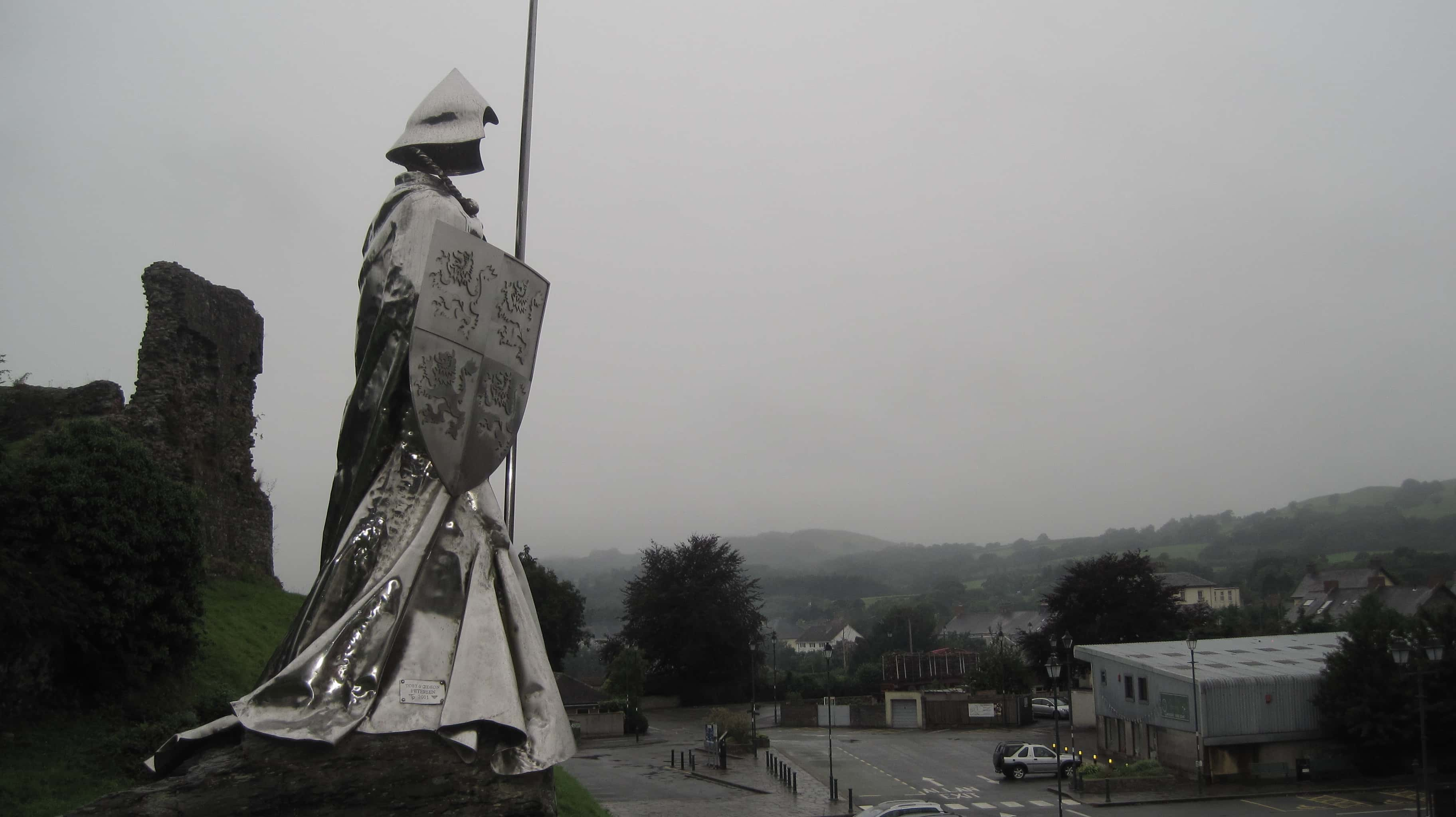 Wikimedia Commons, Llywelyn2000
Wikimedia Commons, Llywelyn2000
99. That Could Have Gone Better…
The first major battle of the Second Barons’ War was the Battle of Lewes. At first, it seemed like a foregone conclusion that Edward and his father would win; their forces outnumbered the rebellious barons’ army by two to one. Early in the battle, Edward led a cavalry charge which broke part of the enemy’s flanks and caused a partial retreat. Unfortunately, Edward’s hubris got the better of him and he chased after his retreating foe.
This left his father and the infantry unsupported and forced to make an advance uphill. By the time Edward returned to the main battle, Henry III was in retreat. Father and son would both be captured, no doubt leading to a very awkward imprisonment together.
100. Not a Bad Redemption!
Even after the barons released his father, they kept Edward to make sure the king followed their demands. However, Edward managed a daring escape after a few months.
101. I Thought I was the Hero!
It didn’t take long for people to write about Edward. As far back as 1593, English dramatist George Peele released a play titled The Famous Chronicle of King Edward the First. While the story places Edward in the morally righteous position of uniting Great Britain under one banner, the play offers a very sympathetic look at the Welsh enemies of Edward, portraying them as heroic outlaws fighting for freedom.
Even a story that sided with Edward couldn’t help but make him look like a dick.
102. Time to Drain the Swamp Properly!
Following the tempestuous reign of his father, Edward put through sweeping changes in the government of England. Firstly, he fired nearly all the local officials of the day and replaced them. This was done just before Edward launched a country-wide inquest against the corruption within the power structures that led to such discontent during the reign of Henry III.
103. Not Until I’ve Had My Fun!
In 1304, during one of his military campaigns in Scotland, Edward laid siege to Stirling Castle, which lay very close to the location of William Wallace’s surprising 1297 victory. For three months, Edward battered at the castle with trebuchets that he’d brought north at great expense. When the defenders offered to surrender after those three months, Edward actually refused!
The bloodthirsty Edward had just set up a brand-new trebuchet that he called the Warwolf, and he wanted to demonstrate its power. Edward wouldn’t accept the surrender until an extra day of bombardment.
104. Fighting Dirty
Edward was known for his fearsome temper, and he didn’t spare his own children from his wrath. His son and heir, also named Edward, once insisted that his father make Piers Gaveston, a favorite companion of his, into an earl. Edward so infuriated by his son’s demand that he physically attacked his son and tore clumps of hair from his head!
 Braveheart ,Paramount Pictures
Braveheart ,Paramount Pictures
105. Can Dead People Sue for Defamation?
By far the most famous film portrayal of Edward was the 1996 historical epic Braveheart. Irish actor Patrick McGoohan portrays Edward as a sinister tyrant, who is also a “pagan” according to the film’s narration. Given the film’s historical inaccuracy, we can only imagine how Edward’s ghost reacted to the claim that he died while listening to William Wallace screaming “FREEDOM!”
 Braveheart ,Paramount Pictures
Braveheart ,Paramount Pictures
106. That’s Not Cool…
Although Edward defeated the rebellious Simon de Montfort and had him executed, the Earl’s family struck a final blow against Edward that hit hard. Montfort’s sons, Guy and Simon the Younger, murdered Henry of Almain, Edward's cousin and friend. Since the two Montforts had basically killed their own cousin (blaming him for their father’s execution), they were seen as cursed.
Did the curse work? Well, both of the Montforts died within two years, so you can decide for yourself.
107. It’s not the Taj Mahal, but It’ll Do
In 1290, tragedy would strike the royal household. Edward’s beloved wife and queen, Eleanor of Castile, died of sickness (it remains unclear which particular sickness it was). Overborne with grief, Edward ordered a series of twelve memorial crosses to be erected in her honor. Though only three of these survive today, they are still known as “Eleanor crosses” and can be found at Geddington, Hardingstone, and Waltham Cross.
 Wikimedia Commons, Peter Broster
Wikimedia Commons, Peter Broster
108. More Problems to Solve
Despite Edward’s devastation at his wife's death, there were issues he couldn’t ignore. He was down to just one living son, and the conflict with Scotland showed no sign of abating any time soon. As a result, Edward turned to the powerful kingdom of France. By 1291, Edward arranged for a match between his own son, Edward of Carnarvon, and Blanche, the sister of King Philip IV.
 Braveheart ,Paramount Pictures
Braveheart ,Paramount Pictures
109. You’re Kidding!
As politically savvy as it was, this marriage arrangement between Edward’s son and the King of France’s sister was undone almost immediately. Though Edward had heard enough reports about Blanche’s beauty that he decided he would marry the woman himself, he was soon infuriated to learn that the whole arrangement was a sham.
Blanche was already engaged to marry, and the King of France offered another sister, Margaret, instead. In an act of irony, this attempt at political alliance resulted in Edward declaring war on France for the insult!
 Braveheart ,Paramount Pictures
Braveheart ,Paramount Pictures
110. Why Sure I’ll Settle This!
Incredibly, Edward’s takeover of Scotland first began at the invitation of Scotland’s nobles! Scottish king Alexander III had died without a male heir, leaving his granddaughter, a child in Norway, his successor. This led to such contention among the Scottish nobles that Edward was invited to come to Scotland and arbitrate a smooth transition of power.
111. That was a Fast Coup!
As you can imagine, Edward gleefully took advantage of the invitation to arbitrate the Scottish monarchy. He declared himself to be the Lord Paramount of Scotland before supporting John Balliol as a weak king who would submit to him. When Balliol tried to be independent, Edward defeated him in battle and forced the puppet-king to abdicate.
112. French Flakes
We won’t go too deeply into the campaign by William “Braveheart” Wallace against the English. We will say, however, that his war against the English peaked with a great victory at Stirling Bridge in 1297, followed by a massive raid on northern England. At the time, meanwhile, Edward was campaigning in France, which had formed an alliance with the Scots years before.
Now, however, the King of France was willing to sign a separate truce with Edward to stop the war, knowing that Edward would be free to turn on the Scots instead.
 Braveheart ,Paramount Pictures
Braveheart ,Paramount Pictures
113. Busy Father
It’s unknown just how many children Edward had with his two wives, but the number ranges between 17 and 19. Of those children, only three sons and three daughters outlived their father, including his son and heir, the man who became crowned as Edward II.
 Braveheart ,Paramount Pictures
Braveheart ,Paramount Pictures
114. The King is Dead
During his campaigns in Scotland, Edward developed a serious case of dysentery. At the age of 68, Longshanks died in Cumberland on July 7, 1307.
115. I Hate Piers!
Edward grew to hate Piers Gaveston (his son’s favorite) so much that he had the young man banished from England. When the old king was dying, he summoned a number of his noblemen together. As well as demanding that they look after his son when he became king, Edward also insisted that they make sure Piers Gaveston was never allowed back to England.
Of course, Edward II would ignore that command and Gaveston returned anyway.
 Braveheart ,Paramount Pictures
Braveheart ,Paramount Pictures
116. The Fall of Wales
Although the conflict in Wales seemed to have been resolved with Llywelyn ap Gruffudd’s capitulation and marriage to Edward’s first cousin in 1277, peace didn’t last. Firstly, many of Gruffudd’s subjects began a rebellion in 1282 against the English, and Gruffudd felt there was no choice but to support his people into war. Secondly, his beloved wife died in childbirth the same year that conflicts began.
Edward saw all of it as the chance to settle things once and for all. From 1282 to 1283, the English overran Wales, executed Gruffudd, killed or captured his family, and put an end to Welsh independence. The Welsh have never again come close to such independence again.
117. The General and the King
The one time that Edward and William Wallace engaged in combat was the Battle of Falkirk in 1298. Despite Wallace’s earlier successes, he was now facing 15,000 forces under Edward’s command with only 6,000 Scottish warriors. Contrary to how the battle was portrayed in Braveheart, Wallace ordered his infantry into four blocks of men, bristling with long spears to deter Edward’s cavalry.
Wallace’s archers and cavalry, however, were not as lucky, and they broke under a combination of English heavy cavalry and Welsh longbowmen. Even the heavy infantry of Wallace’s forces was overcome by said longbowmen.
 Braveheart ,Paramount Pictures
Braveheart ,Paramount Pictures
118. A Brutal End
The Battle of Falkirk broke Wallace’s power in Scotland. While he himself was able to flee from Edward’s troops, he’d lost a third of his forces on the battlefield. He would never command a large army against England again, living as an outlaw for the next few years. He was finally captured in 1304, whereupon he was brought to London naked while being dragged behind a horse—but his nightmare was just beginning.
He was subsequently drawn, quartered, castrated, beheaded, and dismembered so that various body parts were hung across England as a warning to any further Scottish rebellion.
 Braveheart ,Paramount Pictures
Braveheart ,Paramount Pictures
119. Be Ruthless
After the death of William Wallace, King Robert the Bruce took up the role of leader of the rebellion against the English. Unfortunately for Robert’s family, they became a target for Edward’s wrath. Robert's younger brother, Neil, was drawn and quartered by Edward’s forces. Meanwhile, Bruce’s sister, Mary, and his ally, Isabella MacDuff, suffered an even more chilling fate.
The two women were left suspended in cages for four years!
120. And Now the Rains Weep O’er Montfort’s Halls
Edward’s time for revenge against Simon de Montfort came when they fought at the Battle of Evesham in 1265. As before, the royal forces outnumbered the barons, but this time, Edward had taken the high ground in the middle of a thunderstorm. Despite Montfort’s best efforts, the barons and their army were completely defeated. In an example of his ruthlessness as king, Edward ignored the tradition of prisoners and ransoms, preferring to wipe out his enemies on the battlefield, even when they were hoping to surrender.
Montfort was forced to watch his son brutally killed before he himself was put to the sword. In a final act of spite and vengeance, Edward ordered that Montfort’s body be mutilated; his head, hands, feet, and testicles were all removed from his person. The scene was called "an episode of noble bloodletting unprecedented since the Conquest [of William the Conqueror]."















